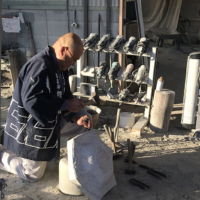The June summit in Pyongyang kicked off a summer of symbolic and historic "firsts" on the Korean Peninsula, marked by the dramatic symbolism of inter-Korean reconciliation after more than five decades of stalemate. Sufficient time has now passed to evaluate what might be called the "honeymoon period" -- the first hundred days of an unfolding peace process that will require considerable political will and the making of some hard choices if it is to be sustained and consolidated. One need only turn to recent events in the Middle East or Northern Ireland to recognize that maintaining momentum in a peace process is hard work in which setbacks, detours and reverses are not uncommon. And domestic political support is an essential prerequisite for progress.
The inter-Korean peace process has already shown several distinct characteristics, however. First, the historic meeting between Korean leaders took place without the mediation of a third party, unlike the processes in Ireland and the Middle East. The fact that it was possible to set aside differences and directly arrange an inter-Korean summit through purely Korean efforts is a tribute to both sides, and it underscores the autonomous character of Korean reconciliation. This is a principle enshrined in the 1972 North-South Joint Declaration and reaffirmed in the June Declaration as well. It is clearly an important starting point and reflects a context and history that is unique to Korea.
However, an unmediated peace process also poses two particularly difficult challenges that will have to be addressed at some point in the Korean case: how to overcome temporary setbacks or apparently intractable differences and how to incorporate verification measures as part of the implementation of agreements. The third parties that may be usefully incorporated into such a process may not necessarily be nation-states or even foreigners, but they do have to be trusted by both sides as fair and impartial intermediaries, even if they are not necessarily neutral.


















With your current subscription plan you can comment on stories. However, before writing your first comment, please create a display name in the Profile section of your subscriber account page.